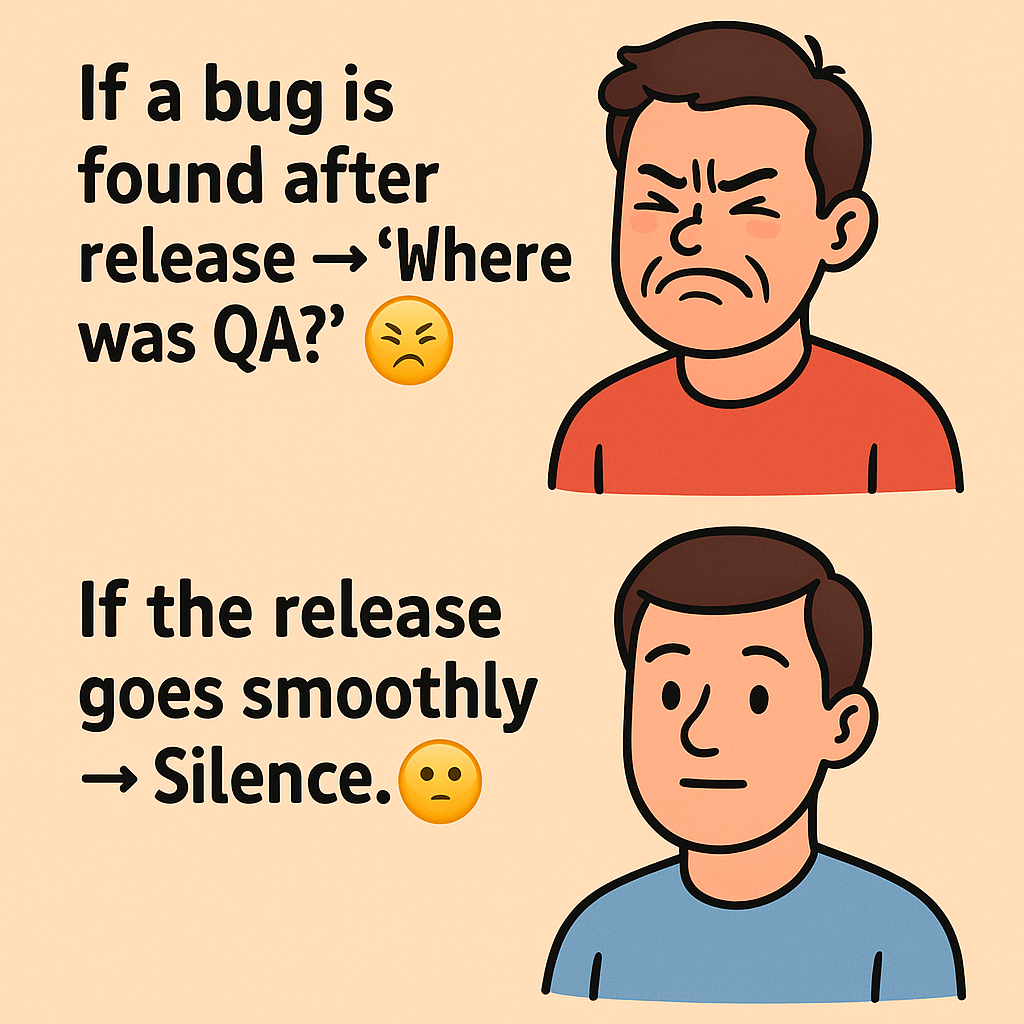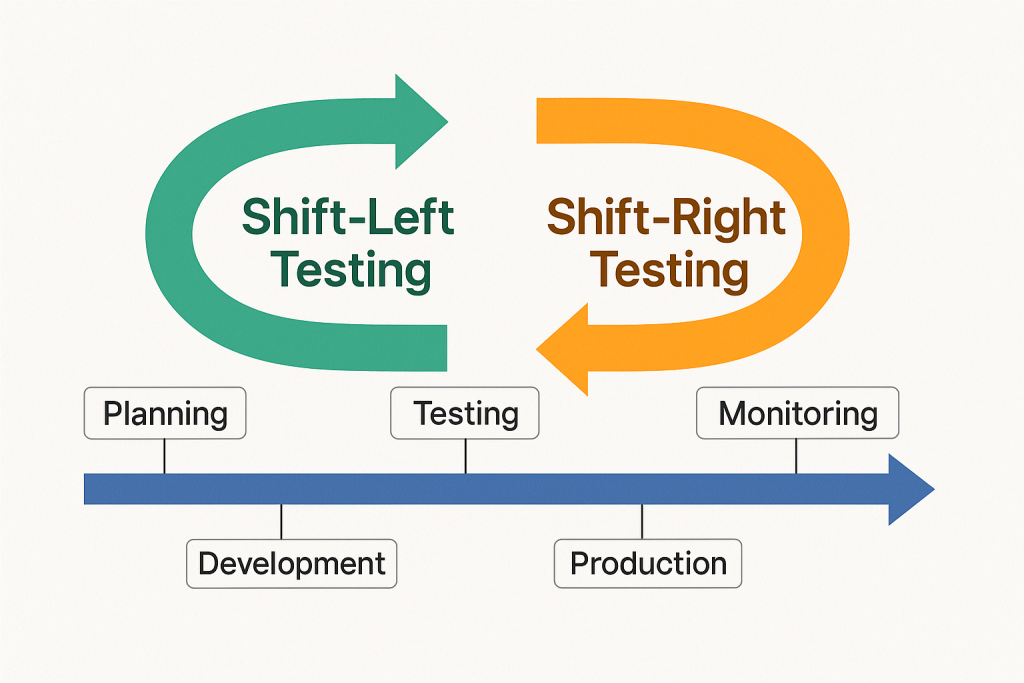Introduction
“Why didn’t QA catch this?”
If you’ve ever worked in software testing, you’ve probably heard that phrase. And if you’re a QA engineer, you know how it feels — like taking the blame for something far beyond your control.
But here’s the truth: Quality is not a one-person job. It’s not even a department. It’s a shared responsibility that starts with how your team thinks, plans, builds, and communicates.
In this post, we’ll explore what that question really means, why it’s often unfair, and how teams can shift from blame to collaboration — the foundation of true software quality.
The Reality Behind “Why Didn’t QA Catch This?”
When bugs reach production, the spotlight immediately swings toward QA. It’s almost instinctive — after all, isn’t QA supposed to prevent this?
Not exactly.
QA’s job isn’t to ensure perfection — it’s to ensure visibility of risk.
Let’s break that down. Testing doesn’t make software bug-free. It makes software transparent. A great QA team reveals where risks exist so that informed decisions can be made before release. But when deadlines are tight, requirements are unclear, or code changes are rushed in at the last minute, even the most diligent QA team can’t catch everything.
Quality Isn’t a Department — It’s a Culture
Blaming QA for a missed defect is like blaming a doctor for diagnosing a disease that could’ve been prevented by better lifestyle choices. QA identifies problems; they don’t create them.
In a healthy software culture, everyone — from developers to product managers — plays a role in quality:
- Developers ensure code readability, maintainability, and test coverage.
- Product managers provide clear, testable requirements and realistic timelines.
- QA engineers assess risk, verify functionality, and advocate for the user experience.
- Leadership fosters a culture where it’s safe to raise concerns without fear of blame.
When all these pieces work together, the question changes from “Who missed this?” to “How can we prevent this in the future?”
The Human Element: Mistakes Are Inevitable
Let’s be real — software is built by humans, and humans make mistakes. No amount of automation, regression testing, or process documentation can eliminate that.
What we can do is minimize the impact of those mistakes. That’s where strong QA practices make a difference:
- Early testing in the SDLC (Shift Left approach)
- Continuous integration and delivery pipelines
- Automated regression suites
- Exploratory testing for real-world user scenarios
- Clear communication channels across teams
These don’t just help catch bugs — they build confidence.
The Real Question: What Did We Miss as a Team?
When something goes wrong in production, the right question isn’t “Why didn’t QA catch this?” but rather:
- Did we have enough time to test thoroughly?
- Were the requirements clear and stable?
- Did we communicate last-minute changes properly?
- Was there enough test coverage for new and integrated features?
- Did the team prioritize testing based on risk and business impact?
Answering these questions honestly leads to process improvement rather than finger-pointing.
From Blame to Collaboration
A blame culture creates fear — and fear kills innovation. When QA feels pressured to “just sign off,” the focus shifts from quality to compliance. Teams start hiding mistakes instead of learning from them.
Collaboration, on the other hand, builds trust. It encourages testers to raise red flags, developers to pair-test, and managers to ask, “What support do you need?” rather than, “Who caused this?”
The best QA teams I’ve seen aren’t gatekeepers. They’re collaborators. They work alongside developers, participate in design reviews, and align testing priorities with business goals.
A Great QA Doesn’t Just Find Bugs — They Reveal the Unknown
A seasoned QA professional knows the difference between testing for known defects and exploring for unknown risks.
Testing is not about catching everything — it’s about uncovering what you didn’t even realize could go wrong. That’s where real value lies.
Great QA engineers don’t just test functionality; they question assumptions. They see the product through the user’s eyes. They identify the blind spots that documentation can’t.
That’s why good QA isn’t just about finding bugs. It’s about helping the entire team see the bigger picture.
Building a Culture of Quality
If you want to stop hearing “Why didn’t QA catch this?”, start building a culture of quality:
- Start testing early — Integrate QA from day one, not the last sprint.
- Document clearly — Well-written acceptance criteria reduce ambiguity.
- Automate wisely — Use automation to save time, not replace human judgment.
- Encourage feedback loops — Retrospectives shouldn’t be blame sessions; they’re learning opportunities.
- Communicate openly — Keep QA, devs, and stakeholders aligned on expectations.
- Lead with empathy — Remember, QA is trying to protect the product, not delay it.
Conclusion
The next time a bug slips through, pause before asking, “Why didn’t QA catch this?”
Instead, ask, “What did we miss as a team?”
Because quality is built together — through collaboration, trust, and shared accountability.
Blame breaks trust.
Collaboration builds quality.
And that’s how great software — and great teams — are made.

